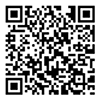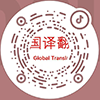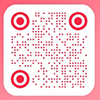Specific Solutions
Paper Abstract Translation: A Key Bridge in Academic Communication
In academic research, the abstract of a paper is considered the "face" of the research, providing readers with a quick overview of the study. However, with the globalization of academic exchange, cross-language communication has become increasingly important. In order for scholars and researchers from different language backgrounds to share academic achievements worldwide, the translation of paper abstracts has become crucial. Why is paper abstract translation so important? What are the challenges and requirements? How can we achieve high-quality abstract translation? This article will explore these questions.
The Importance of Paper Abstract Translation
A paper abstract typically summarizes the purpose, methods, results, and conclusions of the research. A clear and accurate abstract helps readers quickly grasp the core content of the paper and decide whether to read it in full. In today’s increasingly globalized academic environment, many researchers need to publish their work in languages other than their native tongue or need to read research written in other languages. In this context, paper abstract translation plays a vital role in facilitating cross-cultural academic communication.
Firstly, accurate abstract translation enables researchers and scholars worldwide to access cutting-edge results in various fields and fosters international collaboration. Many academic journals require authors to submit abstracts in multiple languages to ensure broader academic dissemination. Without proper translation, valuable research findings may remain confined by language barriers and fail to reach a wider academic audience.
Challenges of Paper Abstract Translation
Translating paper abstracts is not as simple as regular translation. It requires translators to possess not only high-level language proficiency but also knowledge of the relevant field. Here are some common challenges:
1. Translating Specialized Terminology
Academic papers often contain specialized terms and technical expressions. Different languages may have different ways of understanding and expressing these terms, and ensuring their accuracy in translation is crucial. For example, paper abstracts in fields like medicine, engineering, and law often contain specialized terminology, and even a small mistake in translation could lead to misinterpretation. Therefore, translators need not only linguistic proficiency but also a certain level of understanding of the relevant discipline.
2. Cultural Differences
Different languages and cultural backgrounds can affect expression and communication styles. When translating a paper abstract, the translator must consider the cultural differences in the target language and ensure that the translation is both accurate and culturally appropriate. For example, English and Chinese have very different sentence structures; Chinese tends to be more concise, while English may focus more on completeness and clarity. Therefore, the translation must be fluent while also adapting to the thinking patterns of the target culture.
3. Maintaining Scientific Rigor
Academic papers are highly scientific and rigorous, and this rigor must be preserved in abstract translation. Translators must ensure that information is accurately conveyed and avoid misinterpretation of the research findings. Even small deviations can affect how the academic community understands and evaluates the study, making it essential to approach the translation with great care.
How to Achieve High-Quality Paper Abstract Translation
To ensure high-quality paper abstract translation, here are a few key recommendations:
1. In-Depth Understanding of the Research Field
When translating a paper abstract, the translator must have a certain level of understanding of the research field. Only by grasping the research background, objectives, and methods can the translator accurately convey the original meaning. Specialized knowledge forms the foundation for quality translation, so translators must continually expand their knowledge in the relevant fields.
2. Accurate Translation of Specialized Terms
The accurate translation of specialized terms is critical in paper abstract translation. Translators must select the appropriate terms according to the academic standards of the target language. When encountering uncommon or difficult-to-translate terms, the translator can refer to academic dictionaries or consult similar works in the same field to ensure precision.
3. Maintain Clarity and Conciseness
Paper abstracts should be concise and to the point, avoiding redundant expressions. When translating, the translator should preserve the essence of the original abstract and avoid over-translation or unnecessary explanations. The translator should convey the core message of the research in a simple yet effective manner that fits the expression habits of the target language.
4. Proofreading and Polishing
High-quality paper abstract translation is not just about converting the language; it also requires careful proofreading and polishing. Proofreading helps identify grammatical errors, spelling mistakes, and logical inconsistencies. Polishing ensures the translation flows smoothly and meets the writing standards of the target language.
Conclusion
Paper abstract translation is not just a language conversion process, but a crucial bridge in cross-cultural academic communication. It requires translators to possess both language skills and specialized knowledge, as well as sensitivity to the target culture. As global academic exchange deepens, paper abstract translation will continue to play an increasingly important role in facilitating international academic cooperation and advancing the dissemination of knowledge. High-quality abstract translation not only helps in spreading academic results but also enhances scholarly influence and fosters global collaboration among researchers.


















